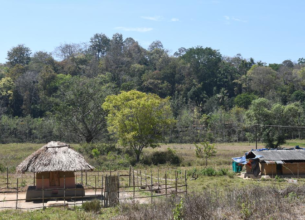Mammalian spread of H5N1 and its Pandemic Potential
13, Feb 2023

Prelims level : Science & Technology
Mains level : GS-III Science & Technology - Awareness in the fields of it, Space, Computers, Robotics, Nano-Technology, Bio-Technology, Pharma Sector & Health Science
Why in News?
- Avian influenza (bird flu) is a highly contagious viral infection that impacts birds. However, rarely it can infect mammals through a phenomenon called spillover, and spread among them. There are various subtypes of avian influenza viruses that range from low pathogenic to highly pathogenic types. One of the highly pathogenic subtypes is H5N1.
- Apart from causing severe disease and death in birds, H5N1 has also caused human infections through close contact with infected birds or contaminated environments. It is often fatal.
- Several instances of the spread of H5N1 among mammals have been reported. Concerns are raised about its spillover among humans and the risks of the human pandemic.
Associated concerns:
- The H5N1 can potentially impact mammals like ferrets, minks, seals, and domestic cats when during their contact with infected birds or their feces or while consuming the infected carcasses.
- They can further serve as reservoirs. Moreover, the virus could evolve to adapt to new hosts and might lead to further outbreaks.
- Along Russia’s Caspian Sea coast there was a mass mortality event that killed nearly 700 seals. Scientists are investigating the potential mammalian spillover as an H5N1 variant was detected in wild birds of the region a few months ago.
- Similarly, in February 2023, Peru registered cases of H5N1 in sea lions and a dolphin. Additionally, a lion in a zoo also died from H5N1.
- The U.K. communicated the cases of otters’ and foxes’ death due to H5N1 infection.
- Notably, wildlife ranging from foxes, coyotes, and raccoons scavenge on infected birds or bird carcasses.
- It was found that the only recorded incidents of intra-mammal transmission of the virus were among mink in captivity at a farm in Spain (in 2022).
H5N1 outbreaks cause severe economic impacts like
- Huge losses to the poultry industry
- Threatens food and vaccine security (eggs are used for vaccine production)
- Raises concerns about animal welfare
Details of some outbreaks across the world:
- The first detected case of the H5N1 avian influenza virus was in 1996 on a goose farm in China. It was followed by a major outbreak in 1997 among poultry in Hong Kong. It also spread to the human population and left 6 people dead and 18 infected.
- In the year 2004, an outbreak occurred in several countries in Asia which further resulted in a global outbreak.
- Several European and Asian countries reported H5N1 in poultry in 2013 and 2014.
- The virus is majorly spread among countries due to migratory birds.
- Around 800 cases of human H5N1 infections have also been reported (as of February 2023) with a high fatality of 53%.
- A new strain namely 2.3.4.4b emerged in 2020. It spread across Asia, Africa, and Europe and later to North(2021) and South America (2022).
- It was found that H5N1 sequenced from the mink farm in Spain showed several mutations like T271A that increase viral replication in mammalian tissues.
Way Ahead:
- To prevent outbreaks and spillovers, the following measures are required:
- Vaccination of poultry
- Safe disposal of dead birds or carcasses
- Quarantine and culling of affected animals
- Using personal protective equipment while handling birds
- Improved surveillance and monitoring of birds and other animals
- Molecular surveillance of H5N1 and its subtypes is important to understand and respond to outbreaks. Thus, Genome sequencing can be employed to keep a close watch on mutations and virulence factors.
















